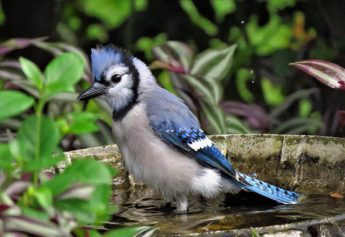Introduction
Quick Navigation
It is a common thing to see people of different ages staring into the sky at birds flying or simply nesting, either with their eyes or with the aid of a binocular lens. This art or process is known to many as birdwatching or birding. Most of the time, these two bird-related activities are often confused for each other, but there is a subtle difference between the two. While birdwatching is a more relaxed and aesthetic form of observing birds, birding is an active aspect that involves conscious actions like traveling to places to know and observe different species of birds. These activities are carried out in regions with a huge population of birds. Birds as animals are native to certain areas, which in turn become favorite spots and states for birders.
See also bird watchers name
The concept of native birds does not imply that those birds are restricted to a particular region. It just means that the birds frequent the area up to the point where they can be considered to be residents. Furthermore, they are usually found in certain areas because their body system supports the climate, temperature, atmosphere, and other ecological and biological factors of the environment. Some birds who do not migrate with the change of seasons can be found in certain places all around the year. Several birds are native to the state of Indiana, where they can be seen in huge numbers. This is because the environmental factors favor them, and even when they migrate, they still return in due season.
Check also bird movies
Places with a high number of migrant and resident birds tend to receive and entertain an increasing influx of tourists. This is because the number of birders globally is speedily on the rise as people are beginning to love the experiences that birding brings.
Wildlife overview of Indiana
This state which is nicknamed the Hoosier state sits proudly in the Mid-western region of the United States with a population of over six million people. Indiana has diverse economic interest and establishments with several metropolitan areas and numerous industrial cities which are small yet highly productive. It also generates economic revenue through the various professional sports teams and events it holds annually.
In terms of wildlife and environmental conservation, this region elevates both the preservation and promotion of natural areas. This is seen in the inclusion of a bird, the Northern cardinal, in the insignia of the state. Indiana as a state has diverse natural habitats suitable for several species of animals, including birds. About twenty-one percent of the state is covered in forest, thus promoting the survival of both terrestrial animals and birds. It is home to countless species of mammals, reptiles, amphibians, insects, and even birds making the state an attraction to birds and animal lovers alike.
See this too best online nursery for perennials
Birds native to Indiana
Certain birds have, over time, become residents of Indiana, where they can be predominantly found and spotted. These birds are mostly found in wild and open forest lands. Some of these birds are flightless, while others are aquatic birds. According to ornithologists, about four hundred and twenty-two different bird species, migrant and resident can be found in Indiana. Some of these birds include the American black duck, horned grebe, mourning dove, common nighthawk, sandhill crane, California gull, Caspian tern, American bittern, Turkey vulture, and Mississippi kite. These are just a few out of the hundreds of bird species.
Check out the average lifespan of a bird
American black duck
Among the several species of birds in Indiana, this breed stands out as it is one of the largest and heaviest in its duck family. They prefer freshwater and are mostly found in shallow marshes. They are also partially migratory as they tend to change location during winter. The diet of this water bird is diverse as they are omnivorous. They usually feed on leaves, stems, seeds of water plants, snails, and some small fishes. As lovely as these birds are, they are being hunted for food and often sport. Most birders particularly love watching them feed as they do so in a fascinating manner.
Horned grebe
It is a relatively small waterbird with a moderately long neck and a flat forehead. They breed mostly in temperate regions and prefer shallow water bodies like freshwater ponds and marshes. These birds feed on small fishes and other water organisms by diving underwater. They are very social and vocal animals.
See this too meaning of bird dreams
Mourning dove
This bird species is considered one of the most abundant of all North American birds, and it is also a game bird. However, its large population is due to its increased and prolific breeding. It is usually a common sight in the airspace of Indiana, and most residents often sight this creature in their backyards.
Common nighthawk
This medium-sized bird is a nocturnal animal that is often recognized by the sounds it makes. It is extremely difficult to spot this bird with ordinary eyes by day, and it rarely travels on the ground. It is not a social bird as it usually travels alone and is commonly found in forests, deserts, savannahs, and beaches. Nighttime feeding on flying insects is their specialty as they rarely feed in the day.
Sandhill crane
They are well-known and recognized migratory animals as they undertake this journey annually. These fairly social birds live in mostly pairs and family groups and even travel together. Although they are herbivores, they tend to eat various types of food as long as it is available. As they are migratory species, they are mainly seen in Indiana at a certain time of the year.
Conclusion
The birds of Indiana usually offer an intriguing and different experience for most birders, much to their delight. Although these birds seem to be abundant, they are gradually being threatened due to the encroaching activities of man. Nevertheless, even an ordinary birdwatcher would be greatly satisfied with the number of bird species he or she will get to see in Indiana.

